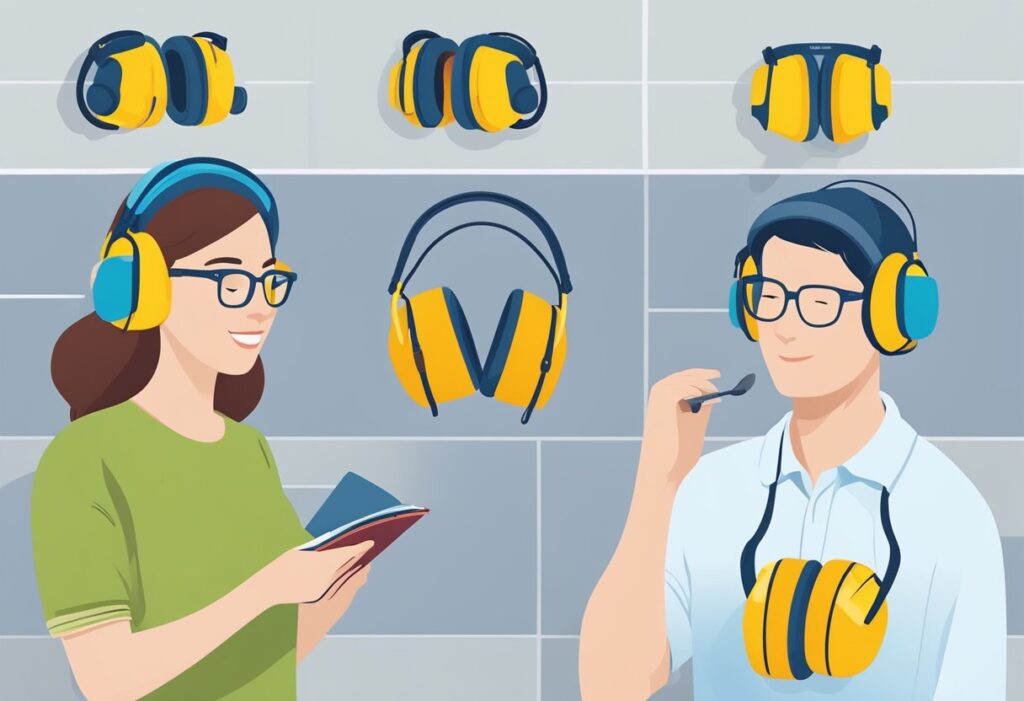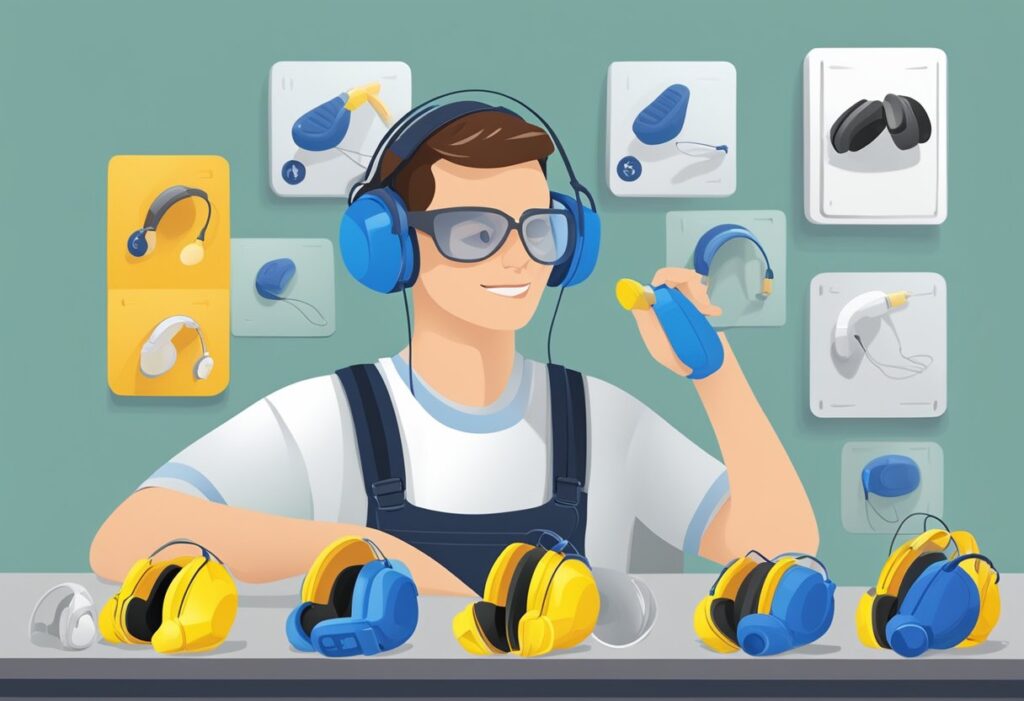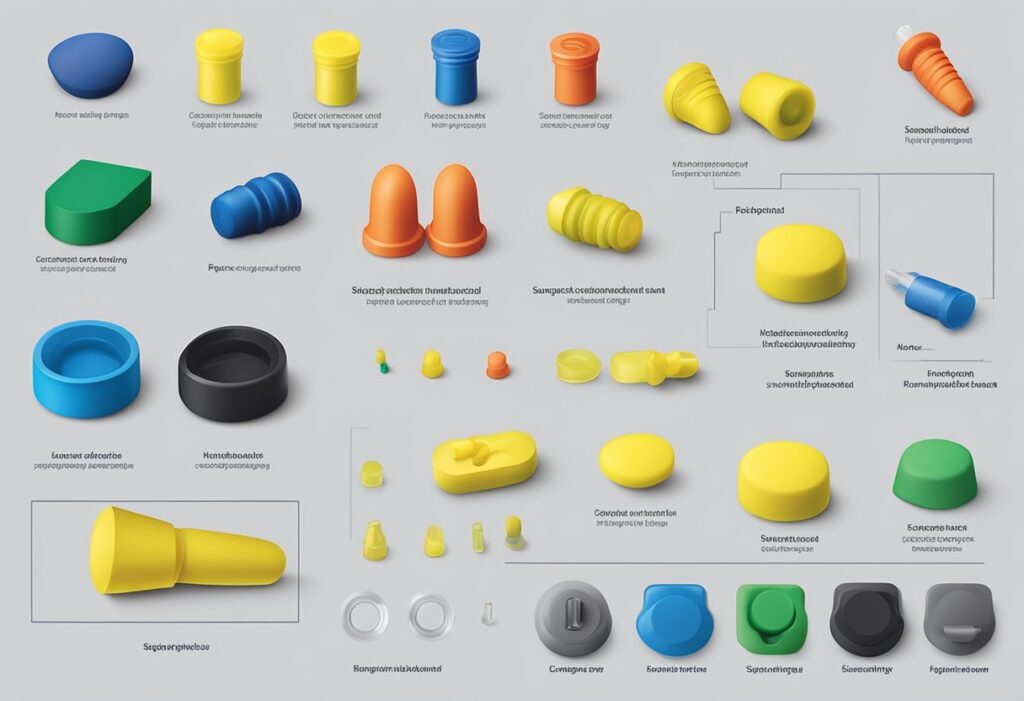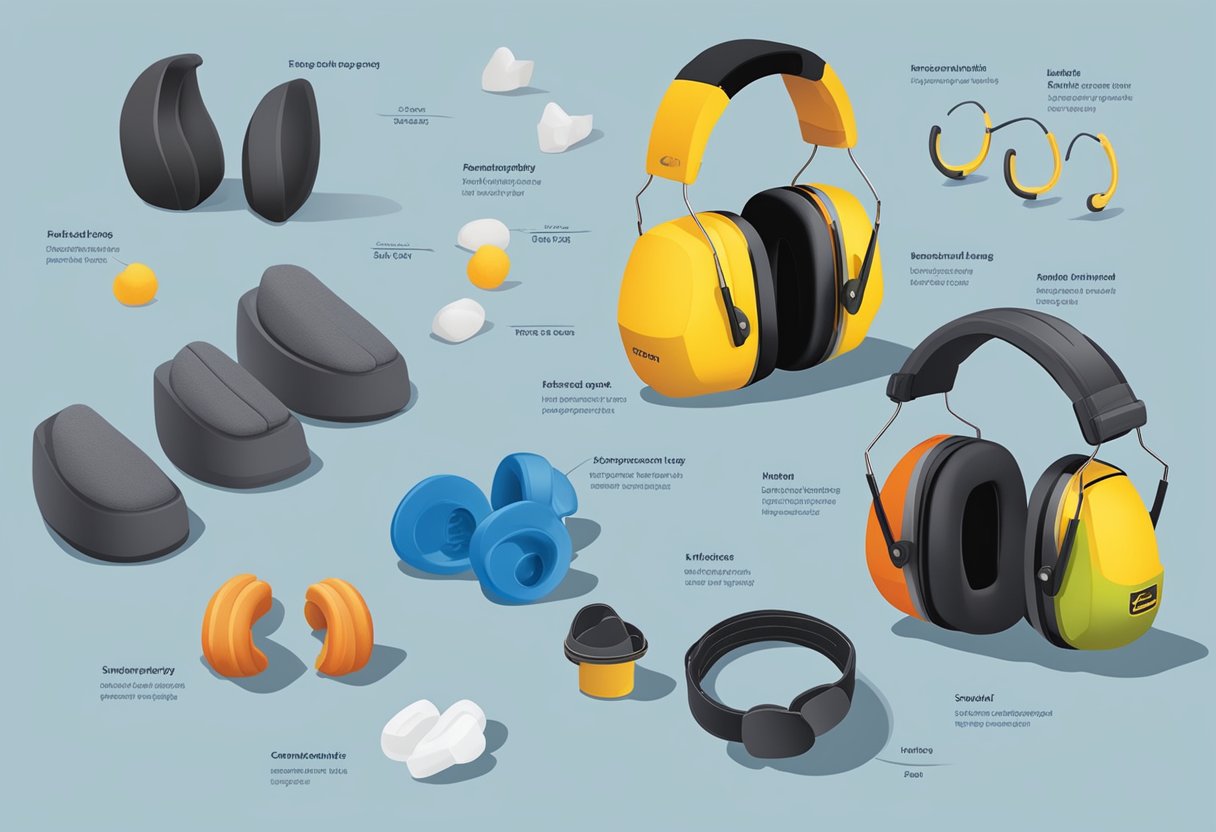Ear protection is not just a safety measure but a source of relief and Comfort for those working in noisy environments. Whether you’re a musician, construction worker, or frequently exposed to loud noises, choosing the proper ear protection to shield your ears from damage is essential. Selecting the appropriate earplugs for your needs might be complicated and have many variations. However, the assurance that comes from knowing you’re protecting your hearing is priceless.
Understanding the various types of ear protection available and selecting the right one can be overwhelming, but it doesn’t have to be. By arming yourself with knowledge and considering factors such as the noise level of your environment, the length of time you’ll spend on noise levels, your level of Comfort, and other factors, you may confidently select the earplugs that will best suit your requirements. Additionally, proper use and maintenance of your ear protection are essential to ensure its effectiveness, giving you a sense of control over your Safety and boosting your confidence in your ability to protect your hearing. Click here for further information on our site, Ice Age Tools.
Key Takeaways
- Understanding the different types of ear protection available is crucial in selecting the right one for your needs.
- To ensure earplugs work, you must wear them correctly and keep them clean.
- It is vital to adhere to regulations and recommendations to reduce the likelihood of hearing loss caused by noise.
Understanding Hearing Protection

Types Of Hearing Protectors
Many hearing protectors are available, including earmuffs, earplugs, and canal caps. While earplugs are placed into the ear canal to block out sound, earmuffs fit snugly around the wearer’s skull and surround the entire ear. Canal caps, on the other hand, are soft earplugs that fit over the ear canal opening.
Noise Reduction Rating (NRR)
One way to evaluate a hearing protector’s efficacy is to look at its NRR or Noise Reduction Rating. The NRR quantifies the degree to which a hearing protection device reduces external noise. For instance, a device with an NRR of 25 can reduce noise by up to 25 decibels, providing significant protection for your hearing.
Importance Of Fit
Proper hearing protection fitting is essential. A poorly fitted device can reduce its effectiveness and potentially lead to noise-induced hearing damage. Fit testing, which involves checking the seal of the earplugs or earmuffs, ensures that the device provides adequate protection and can prevent hearing damage.
It’s important to note that attenuation, or the noise reduction achieved by a hearing protection device, can vary depending on the noise frequency and fit. In simpler terms, it’s like the shield’s strength against sound. Therefore, it’s crucial to choose a device with an appropriate NRR and ensure a proper fit to prevent hearing loss caused by noise and attain the specified level of noise reduction.
Selecting The Right Ear Protection
When selecting the proper ear protection, there are several factors to consider. Here are some of the most important factors to keep in mind:
Assessing Your Environment
The first step in selecting the proper ear protection is to assess your environment. Consider the noise level and the duration of noise exposure. Working in an industrial environment may expose you to high noise levels for extended periods. In this case, you will need ear protection that provides a high level of noise reduction. On the other hand, if you work in an environment with intermittent noise exposures, you may need ear protection that is easy to put on and remove, such as the 3M WorkTunes Connect Hearing Protector.
Comfort And Convenience
Comfort is crucial when choosing ear protection, especially if you wear the device for extended periods. Look for lightweight and comfortable materials and consider the design of the earplugs. Ensure the earplugs you choose are compatible with all your other PPE, such as hard helmets, eye protection, and helmets, because some earplugs require a variety of PPE. Choosing ear protection that prioritizes Comfort shows that your well-being is considered when making decisions.
Compatibility With Other PPE
If you wear other personal protective equipment (PPE), such as a helmet, hard hat, or respirator, Ensure the earplugs you purchase are compatible with these products. Look for ear protection designed to complement different forms of PPE without diminishing its effectiveness. This way, you may be certain that your protective gear to make sure you’re safe on the job.
When shopping for earplugs, remember these things to ensure you choose a pair that fits snugly, provides sufficient protection, and won’t clash with any other personal protective equipment (PPE) you may be wearing.
Special Considerations For Ear Protection
Based on individual demands and activities, there are a few unique factors to consider while selecting earplugs. These include communication needs, dual protection in high-noise environments, and the protection required for specific activities.
Communication Needs
Communication headsets or sound restoration hearing protectors may be a good option for those who need to communicate while wearing ear protection. These types of ear protection allow for clear communication while protecting the ears from loud noises. Flat attenuation hearing protectors are another option that can improve speech communication in very loud environments. For a personalized fit and enhanced comfort, Decibullz—Custom Molded Earplugs can be an excellent choice. They offer custom-molded protection that adapts to your ear shape while providing the necessary noise reduction.
Dual Protection
Double hearing protection, such as foam earplugs and earmuffs, may be necessary in high-noise environments. Event organizers can use this to bolster security during motorcycle races, guns, fireworks, and automobile shows.
Protection For Specific Activities
Different activities may require different levels of ear protection. For example, shooting and auto races produce deafening, sudden noises, so choosing ear protection with a high NRR rating is essential. Concerts and other musical performances, on the other hand, may require protection that reduces overall noise levels without distorting the sound quality. Awareness of these specific needs and choosing the proper ear protection can help you fully enjoy these activities while protecting your hearing.
When choosing ear protection, it is also essential to consider the risk of tinnitus and noise-induced hearing loss (NIHL). Activities such as shooting and exposure to loud noises over time can lead to NIHL, which can cause permanent hearing damage. Choosing ear protection with a high NRR rating can help prevent this.
Overall, choosing ear protection that is appropriate for the specific activity and provides adequate protection for the noise level is essential. Considering these considerations, individuals can protect their hearing and prevent hearing damage.
Types Of Earplugs And Their Uses

There are several earplugs to choose from, each with its benefits and drawbacks. This section will explore the most common types of earplugs, such as foam, silicone, and custom-molded earplugs, and their uses in different environments and activities.
Disposable Vs. Reusable Earplugs
Disposable earplugs are typically made of foam and may only be used once. Those on a budget looking for earplugs have found a great substitute. The two drawbacks are that I sometimes color them and that they don’t endure as long as reusable earplugs. Using materials like silicone to create reusable earplugs ensures they last through several applications. They require more upkeep but last longer and cost less than disposable earplugs.
Custom-Made Earplugs
Every person’s ear canal is different, so custom-made earplugs are customized according to the buyer’s dimensions. They are typically made of comfortable silicone and offer high comfort and protection. They cost more than single-use or reusable earplugs, but with regular cleaning and maintenance, they will endure much longer and keep out noise for much longer.
Earplugs With Special Features
Earplugs with special features include pre-formed or pre-molded earplugs designed to fit a specific ear shape. They are typically made of silicone or other comfort materials and offer high Comfort and protection. Another type of earplug with unique features is flat attenuation hearing protectors, which use acoustic filters to reduce noise levels evenly across all frequencies. They are ideal for musicians and other professionals who must hear sounds accurately while protecting their hearing.
When choosing earplugs, consider durability, maintenance, and cost factors. Disposable earplugs are a good option for those who need ear protection on a budget, while reusable earplugs are more cost-effective in the long run. Although they are the most costly option, custom Comforter plugs provide maximum Safety and Comfort. Earplugs with unique features, such as flat attenuation hearing protectors, are ideal for professionals listening to sounds accurately while still protecting their hearing.
Proper Use And Maintenance
Insertion And Removal Techniques
Proper insertion and removal techniques are critical for effectively using hearing protection devices. The user should always follow the manufacturer’s instructions for insertion and removal. Hold the earplugs firmly when you place them in your ear canal; they’ll enlarge to accommodate. Avoid painful or possibly damaging your ear canal by never forcing earplugs into your ear.
For earmuffs, the user should place the ear cups over the ears and adjust the headband for a comfortable fit. The ear cups should be snug against the head but not so tight to cause discomfort. The user should avoid pushing the ear cups against the ears, as this can reduce the effectiveness of the earmuffs.
Cleaning And Storage
Regular cleaning and storage are essential for the durability and effectiveness of hearing protection devices. Earplugs should be cleaned with mild soap and washed and dried thoroughly before being put away. Earmuffs should be wiped clean with a damp cloth and allowed to dry before storage. Keep the earplugs in an excellent, dry spot out of the reach of children and pets and out of direct sunlight.
Regular Inspection And Replacement
The efficacy of hearing protection equipment depends on its regular inspection and replacement. The user should inspect the devices before each use for signs of wear or damage. If your earplugs break or lack flexibility, you should replace them within six months. Earmuffs should be changed out when they can no longer securely secure the ear cups onto the ears.
Fit-testing is an essential aspect of correctly using and maintaining hearing protection devices. The user should ensure that the device fits properly and provides adequate noise reduction. If the device does not fit properly, the user should try a different size or style.
Proper use and maintenance of hearing protection devices are critical for their effectiveness and durability. The user is responsible for inserting and removing the devices according to the manufacturer’s instructions, cleaning and storing them properly, inspecting them frequently, and replacing them as needed. Fit-testing should also conducted to guarantee a snug fit and minimize background noise.
Regulations And Recommendations

Occupational Safety Standards
Regulatory bodies, such as OSHA and the National Institute for Occupational Safety and Health (NIOSH), establish workplace safety standards to protect workers from exposure to loud noise and prevent noise-induced hearing loss. One effective way to comply with these regulations is by using high-quality ear protection, such as the Vanderfields NR35X2 Premium Ear Protection. Vanderfields NR35X2 ear protection provides a Noise Reduction Rating of 32dB. The adjustable headband and padded ear cups offer comfort and a secure fit. These earmuffs are ideal for industrial use, shooting ranges, and noisy household chores.
Exposure Limits And Guidelines
According to NIOSH, the recommended exposure limit (REL) for noise exposure is 85 decibels (dBA) for an 8-hour workday. However, exposure to noise levels above this limit can cause hearing damage. Therefore, Workers should always wear earplugs to protect their hearing from noise levels above 85 dBA.
Hearing Conservation Programs
The primary goal of hearing conservation initiatives is to protect workers’ hearing from potentially damaging noise levels. These programs include regular noise monitoring, employee training, and hearing protection devices. Employers must institute hearing conservation programs once noise levels reach 85 dBA, the OSHA action threshold.
Research audiologists recommend that hearing protection devices be chosen based on their noise reduction rating (NRR) and derating, which considers real-world usage. It is essential to select the correct type of hearing protection device that is comfortable and compatible with the job.
Adhering to occupational safety standards and exposure limits is essential to prevent hearing damage. Employers should implement hearing conservation programs and provide workers with appropriate ear protection devices. Research audiologists recommend choosing hearing protection devices based on their NRR and derating.
Frequently Asked Questions
What Are The Most Important Things To Remember When Choosing A Hearing Protector?
When selecting hearing protection, consider Comfort, discomfort exposure, Comfort, and fit. According to NIOSH, when the decibel level is wearing earplugs, it is advised that it is 85 dBA or more significant. Depending on the noise level in your area, it is crucial to select hearing protection accordingly. Please ensure the earplugs fit snugly; ill-fitting earplugs won’t do their job correctly and could even be painful.
How Do Different Noise Reduction Ratings (NRR) Affect The Choice Of Ear Protection?
Noise reduction ratings (NRR) indicate the level of noise reduction provided by a specific type of ear protection. Selecting earplugs with a suitable NRR for the given setting is paramount. However, the actual level of noise reduction may vary depending on factors such as fit and proper use.
What Are The Different Types Of Ear Protection Available?
Several types of ear protection are available, including earplugs, earmuffs, and canal caps. Earmuffs cover the ears, and earplugs go into the ear canal. Canal caps are similar to earplugs but designed to fit over the ear canal rather than inside. Each earplug has pros and cons; picking the right pair depends on surroundings and personal preference.
What Are The Best Practices For Maintaining The Effectiveness Of Ear Muffs?
Ear muffs should maintain proper fit and adjustment to keep operating. They also need to be inspected for any wear and tear or malfunction & replaced as necessary. Keeping them clean and organized on the money could be helpful.
How Does The Use Of Ear Protection Vary Across Different Environments?
The use of ear protection can vary significantly depending on the specific environment. For example, workers in manufacturing and construction may require ear protection to protect against high noise levels, while musicians may need ear protection to protect against loud music. Additionally, ear protection may be necessary for certain recreational activities, such as shooting or motorcycling.
What Should Be Thought Of When Choosing Ear Protection For Prolonged Use?
When choosing comfort for prolonged use, Comfort, fit, & Important factors to consider are breathabiComfort. In addition to potentially being distracting, earplugs that don’t fit well or are too unpleasant can not offer enough protection. Additionally, ear protection that does not allow for Insufficient airflow could make you sick and hurt.

